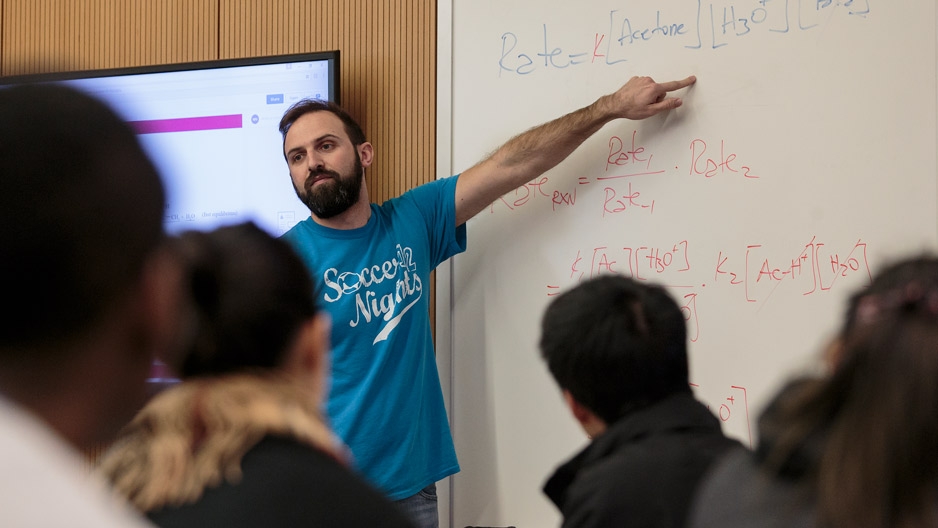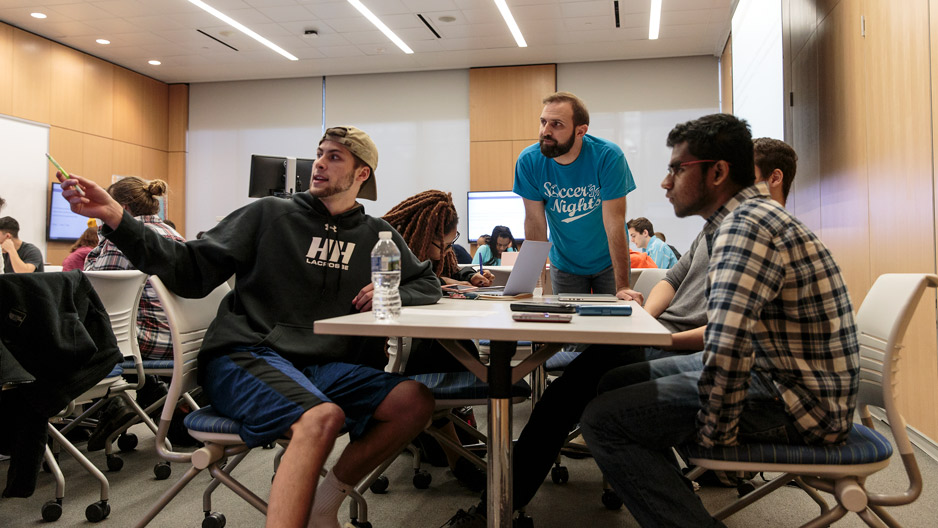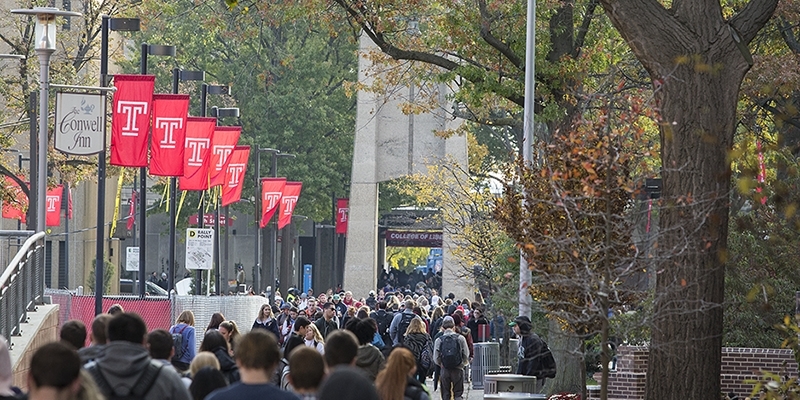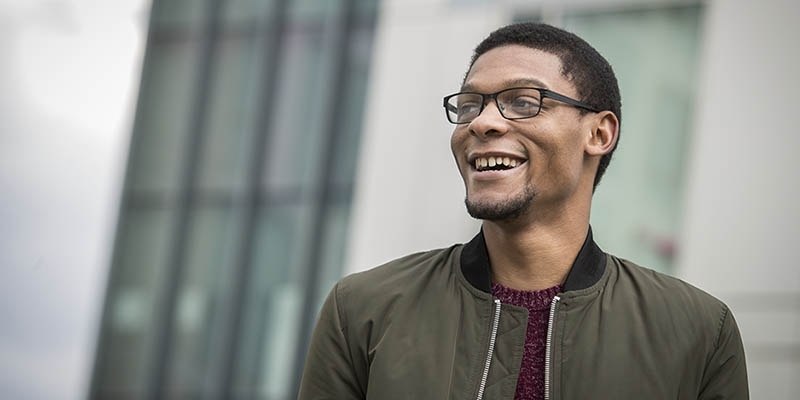Flipping the classroom
The newly formed Center for the Advancement of Teaching helps faculty build their skills and reimagine courses so students get the most out of their academic experience.

When Assistant Professor Daniele Ramella taught a revamped version of his General Chemistry I course last semester, changes in his students’ engagement and success in class became clear quickly.
“Students went from ‘sleeping in the pews’ to being so active on worksheets that sometimes I need to blow a whistle to make them realize I am trying to make them stop and listen to me for a few minutes,” Ramella said.
Ramella’s course was among 11 selected to be reimagined as part of the Student Oriented Active Redesign Project, or SOAR. The project is housed in Temple’s new Center for the Advancement of Teaching, established when the Teaching and Learning Center and the Instructional Support Center merged under Vice Provost for Faculty Affairs Kevin J. Delaney.
SOAR is one of several resources in the center that aim to hone faculty skills and amplify student success in turn. The Center for the Advancement of Teaching, housed in the TECH Center, also offers workshops, faculty learning communities, intensive pedagogy institutes and hands-on technology training, among other services. Consultants from the center are also available to visit classrooms, observe teaching methods and provide feedback to help faculty improve instruction.
“Faculty will greatly benefit from this merger as it combines best practices for teaching and instructional technology tools that facilitate learning,” said Stephanie Fiore, senior director of the center. “Our faculty are designing engaging student-centered instructional materials that propel students’ learning and growth.”
To ensure all Temple faculty can take advantage of the center’s resources, online workshops and virtual consultations are available. There are also satellite centers located at the Health Sciences and Ambler campuses.
Ramella’s class and the 10 others selected as part of the pilot of the SOAR Project were chosen because they all had high rates—21 percent or more during the last seven semesters—of students who received a D or an F, or withdrew from the course.
Once the courses are selected for redesign, Senior Vice Provost for Undergraduate Studies Peter R. Jones said, his office assists the center in implementing the new course in phases over several semesters.
“We take it a step at a time, first teaching one section of the revamped course,” Jones said. “If it’s successful, we ramp up the new offering to many or all sections.”
Delaney said the course redesigns have the potential to make a significant impact for students.
“What is so exciting about SOAR is that it brings together a group of dedicated faculty members to re-envision and reimagine a course from the perspective of student success and the latest in evidence-based pedagogy,” he said. “If it is successful, the payoff will be significant in student learning and progress toward graduation.”
In the redesign of General Chemistry I rolled out in the fall semester, Ramella used a “flipped classroom” model in which students in one of his two sections of the course watched short video lectures before coming to class. That ahead of time video component allowed for more time in class to be used for collaborative problem-solving and focused work on challenging content guidance from Ramella and two peer teachers, Maria Velopolcek and Kyle Winters.

Fiore explained the rationale behind the model.
“The student-centered teaching model asks for a fundamental shift from thinking about what and how faculty are teaching to what and how students are learning,” she said. “In this way, faculty don’t just put together lectures on content, but instead design learning experiences intended to support their students in achieving the goals set out for the course.”
In Ramella’s classroom, it worked. His students’ performance improved significantly, with the percentage of students receiving a D or F or withdrawing decreasing 11 percent below what is normally seen in the course. Students’ grades in the class also shifted higher overall, with more students earning As and Bs. At the end of the semester when he applied the same grading scale to his two sections, Ramella said, he discovered that more than 35 percent of the students in his redesigned class’ grades fell into the A/A- range, compared with 17 percent of the students in the non-redesigned class.
Ramella said the redesigned course also helped him to further hone his teaching methods.
“While presenting the material in a traditional setting, I make efforts to understand where students are failing to process concepts, and I try to readapt my explanations; unfortunately, it most often ends up being feedback from the front few rows only,” Ramella said. “In my flipped classroom, instead, this type of feedback is massively enhanced, and I can change almost everything on the spot to improve the quality of class. This is tremendously useful to me and to the students.”
—Morgan Zalot and Hedy Taub Baker


